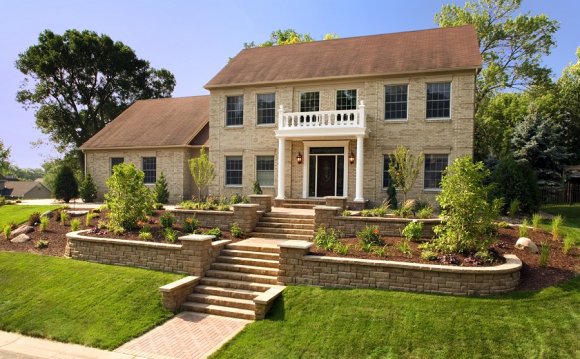
 Landscaping makes the outside of your house beautiful. It can add so much to the appearance and curb appeal, but it also comes with some potential hazards if you’re not careful.
Landscaping makes the outside of your house beautiful. It can add so much to the appearance and curb appeal, but it also comes with some potential hazards if you’re not careful.
Here’s some good tips to keep your landscaping from taking over your house and ruining all your hard work.
Trim Back Trees
Those gorgeous trees hang down on roof tops and rub up against fascia and other trim. They trap moisture close to the building and create a superhighway for fungus, bugs, rodents, raccoons and a ton of other uninvited guests directly to your house.
Tree branches rubbing on your asphalt shingles also cause your roof covering to prematurely wear out, resulting in leaks and other damage. Need one more reason to keep your trees trimmed back at least 5 feet from your house? During heavy storms trees are one of the biggest causes homeowners insurance claims.
Save yourself the trouble and keep your trees (and your neighbor’s trees) safely trimmed back from your house. It never hurts to have an arborist come out and take a look at any trees in questionable health before they fall too.
Space Plants Properly
Houses almost always look better with foundation plantings around their base. But often these shrubs are planted too close to the house or allowed to get to tall.
When you plant shrubs so close to the house that there is no room for air to pass in between the building and the plant it causes wood rot. The siding can’t dry out and in just a couple years you are replacing wood all over the place. Always keep at least 1 foot of space between the building and any plantings.
On a personal note the previous owners of my house did this very thing. Huge azaleas were growing all along one side and it caused a ton of work for me later. Not to mention that of 38 windows in the house the only two with rot were the ones covered by the azaleas. Don’t do it.
Picking the Right Species
Before you plant, think. How tall does this need to be? Is there a drought tolerant species that would work here? Don’t plant a shrub that will reach 30′ tall in a spot where you only need a 4′ shrub. You’ll be trimming every weekend. Choose the right plant for the right spot and you’ll save yourself extra work for decades.
Gardening with local drought tolerant species, called xeriscaping, also saves you on water and hassle. This type of landscaping is particularly helpful in dry arid climates, but is an option in any region. It doesn’t even need irrigation.
A Word About Vines
There is nothing as gorgeous as ivy growing up hundred year old brick to me. Vines make houses look absolutely stunning sometimes, but they are not without their challenges. Vines are not a good option for wood buildings plain and simple.
They climb into cracks in the clapboard and grow in the walls holding moisture tight to the wood, causing…you guessed it, rot. Brick and stucco buildings are also adversely affected by ivy and vines though to a much lesser extent. They do hold moisture and can cause damage to historic mortar over the years.
I don’t know if it’s because it looks absolutely gorgeous or because it keeps the heating bills down, but I hate to remove it from brick. The potential damage it causes on masonry buildings is much less than on wood structures so in this case I’m willing to take my chances. But don’t tell anyone I said its ok.















